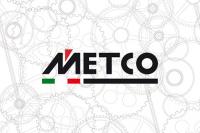The Eco-Ink project by Metco

The Eco-Ink project (co-financed as part of the EU Horizon 2020 programme) aims to develop eco-friendly organic-solvent-free water-based digital inks for the production of polished porcelain tiles, combining the durability of this material with the aesthetic potential of the digital decoration.
Officially launched on 1 August 2018, the Eco-Ink project (co-financed as part of the EU Horizon 2020 programme) has the ambitious aim of developing eco-friendly organic-solvent-free water-based digital inks for the production of polished porcelain tiles, combining the durability typical of this material with the aesthetic potential that can be achieved with the latest digital decoration techniques.
The Eco-Ink project is a major technological challenge that aims to innovate not just a product but the entire production process. The new generation of inks will no longer be deposited onto the layer of glaze and subsequently protected with a glassy coating but applied directly to the tile body. This means that the new Eco-Inks must be capable of penetrating the body rapidly, uniformly and to the required depth. The addition of specific additives to the body facilitates ink penetration and boosts colour development.
 The current research step aims to develop the colour range by extending the gamut of magenta, yellow and cyan and their respective waveforms.
The current research step aims to develop the colour range by extending the gamut of magenta, yellow and cyan and their respective waveforms.
The starting point for magenta was the soluble digital ink patented by Metco several years ago, which has been suitably adapted to meet the eco-compatibility requirements of the project and qualify for the Eco-Ink designation.
Work on the colour yellow is almost complete and it will soon be patented thanks to the excellent results achieved in terms of brightness and waveform, which guarantees perfect positioning on the ceramic body.
Research into the Cyan ink is more complex due to the greater difficulty of finding low-toxicity materials required for a truly eco-friendly formulation. It should be stressed that all Eco-Inks, including the cyan tests, will undergo specific toxicological tests carried out by specialist external laboratories for the purposes of validation.
Another area of research is that of post-treatment, i.e. the process carried out subsequent to application of the Eco-Ink onto the substrate, which must guarantee effective penetration and good colour development. Thin layer chromatography (TLC) will be used to monitor the behaviour of individual components, while penetration tests will be used to determine the level of resolution and colour uniformity required for single-pass digital decoration.
The greater eco-compatibility of the Eco-Inks is due to their being entirely free of organic solvents, thereby reducing the carbon footprint and toxicity not just of the inks themselves but of the entire production process. Based on its calculations and preliminary simulations, Metco estimates a potential reduction in CO2 emissions of up to 700 tons/year for every million square metres of ceramic tiles produced with Eco-Inks.
A further advantage of the Eco-Inks consists of their capability to significantly reduce the industrial production costs of polished full-body porcelain tiles. The fact that the new inks penetrate directly inside the ceramic body removes the need for glazes, frits, compounds and vitreous materials; the glaze preparation department is completely eliminated from the factory layout; and the production line between the press and the kiln is significantly shortened as it consists of a single digital printer and little else. Moreover, the absence of vitreous material on the surface allows the tiles to be fired more rapidly and consequently with a smaller heat load. This means that the energy costs are significantly reduced for the same output volumes given the smaller mass that needs to be vitrified compared to conventional techniques.
Did you find this article useful?
Join the CWW community to receive the most important news from the global ceramic industry every two weeks





















